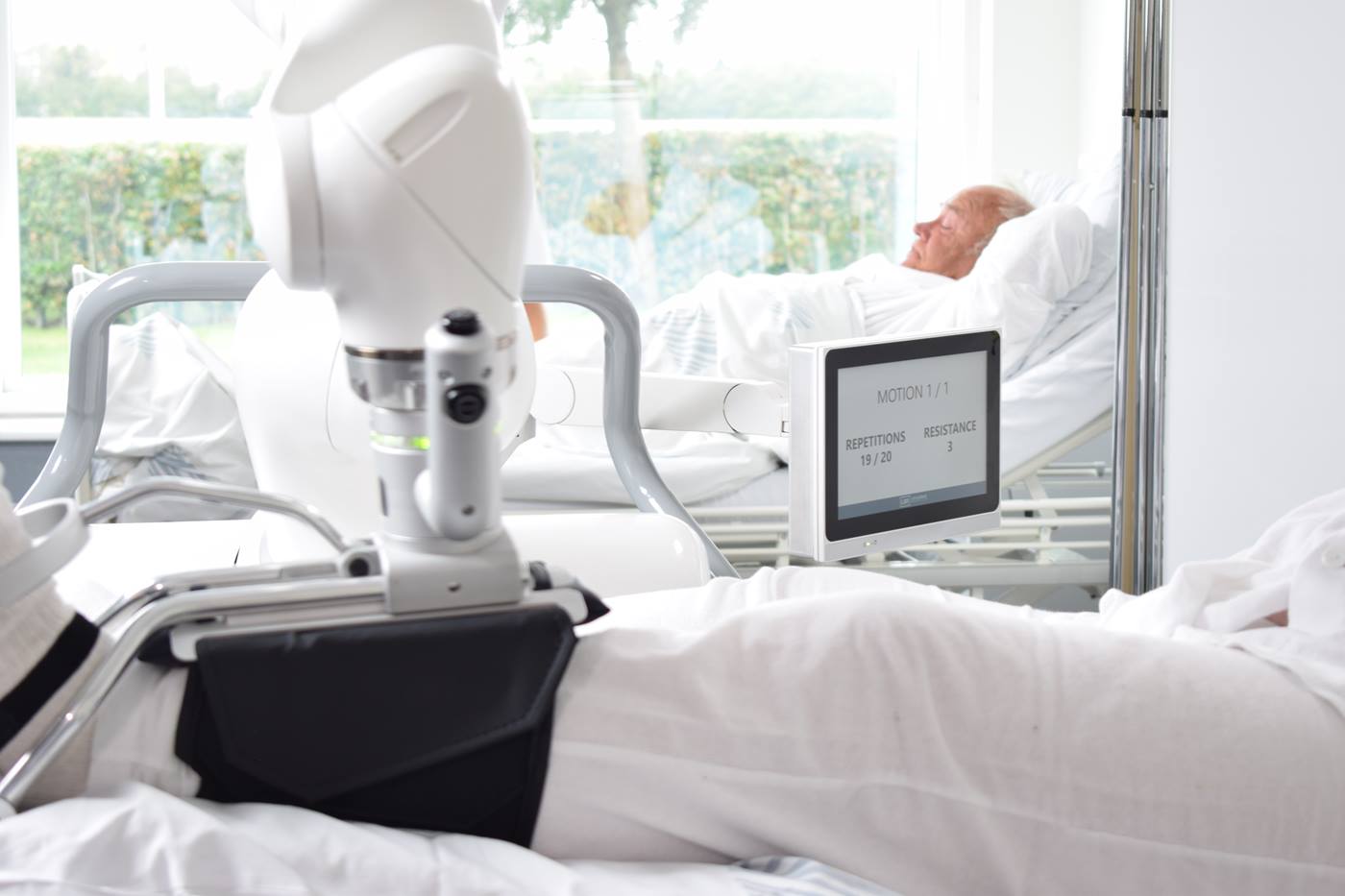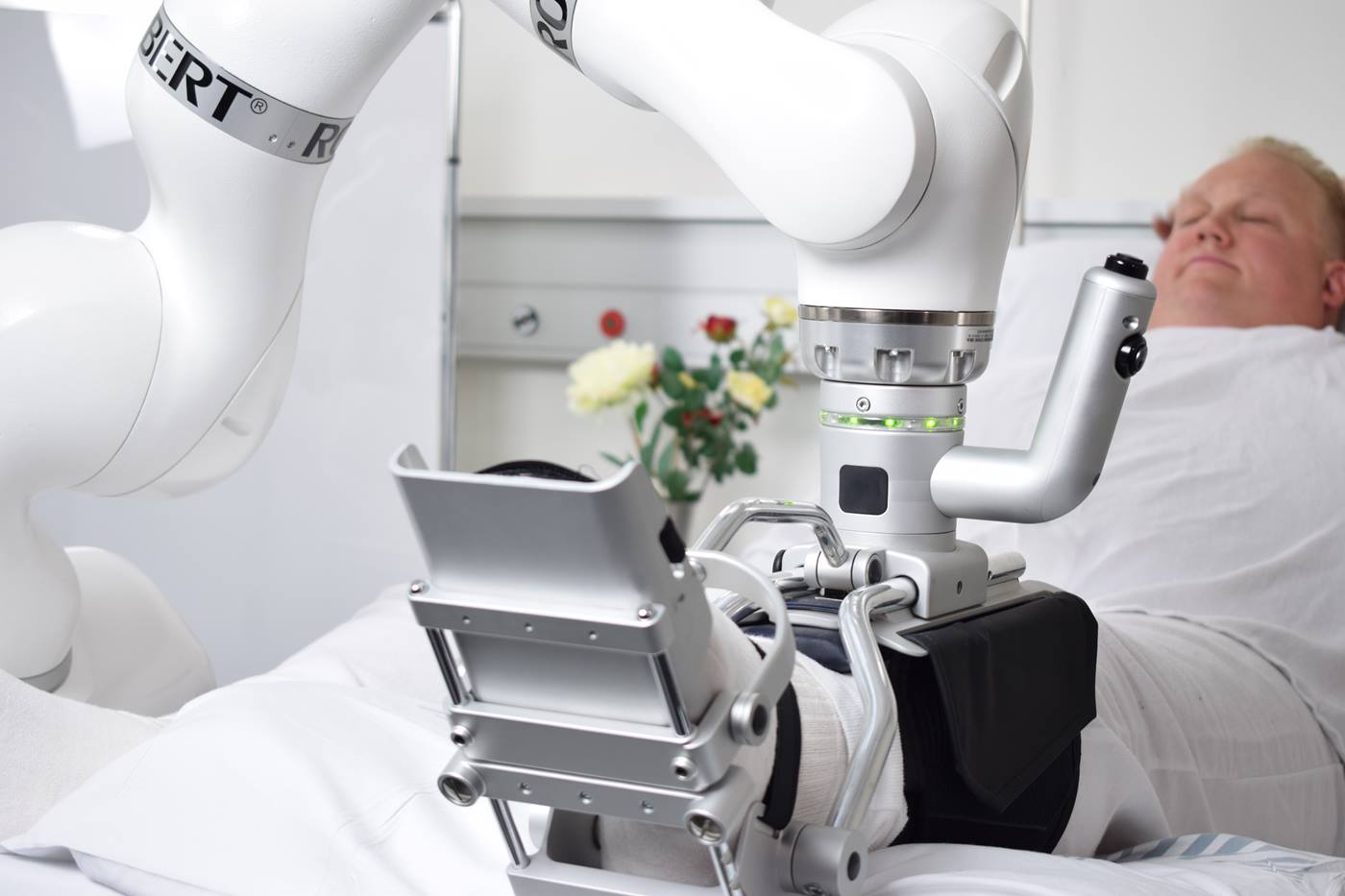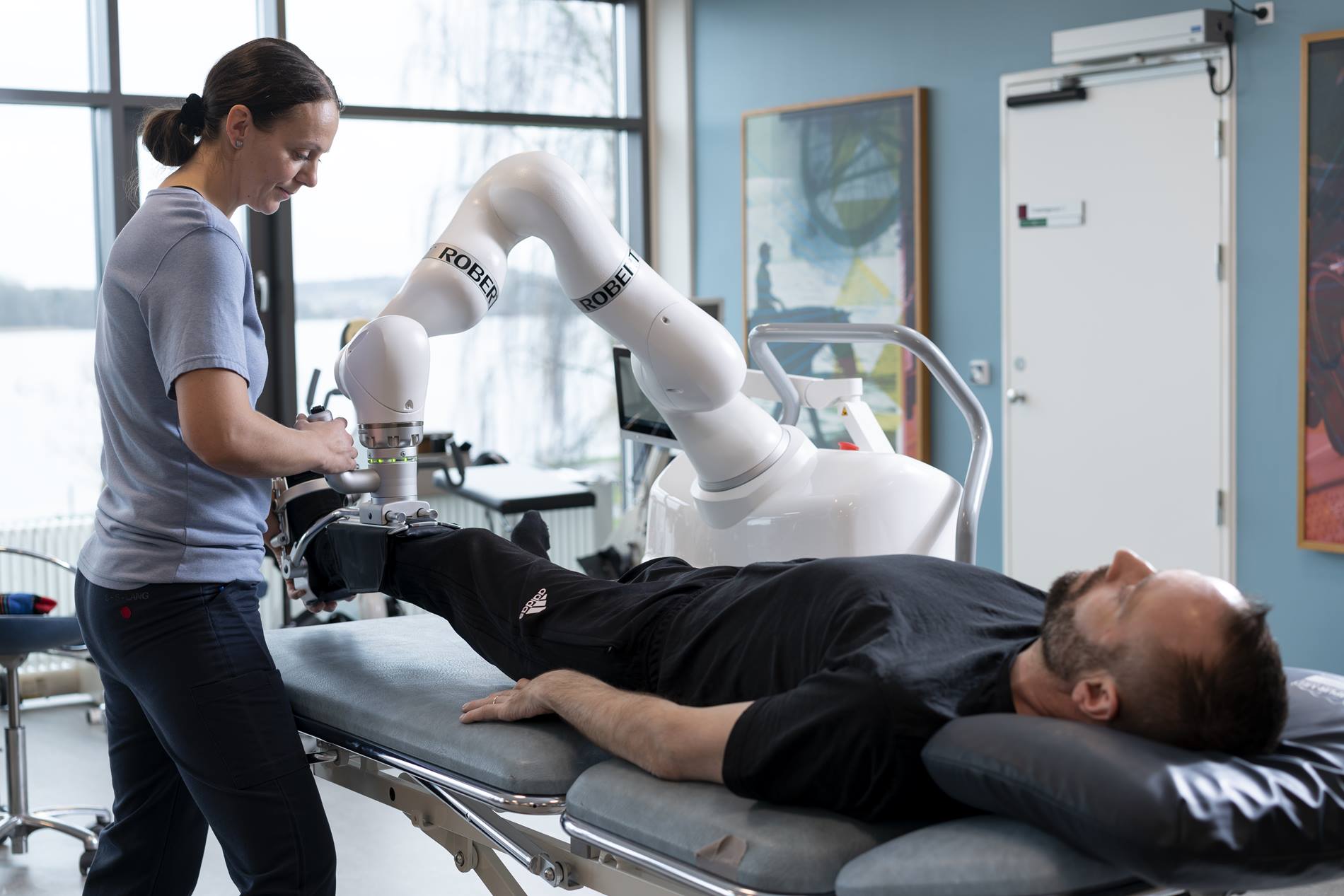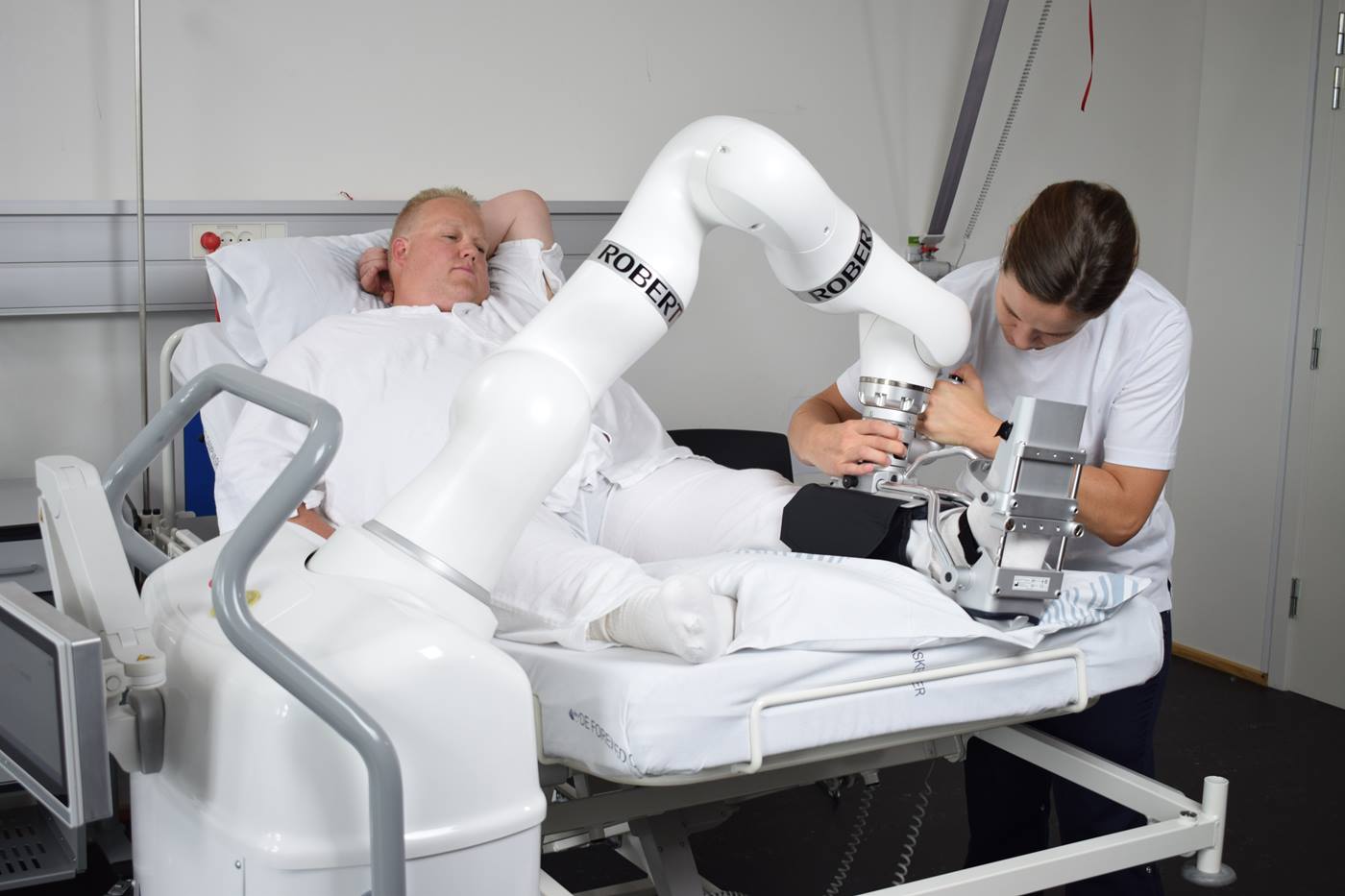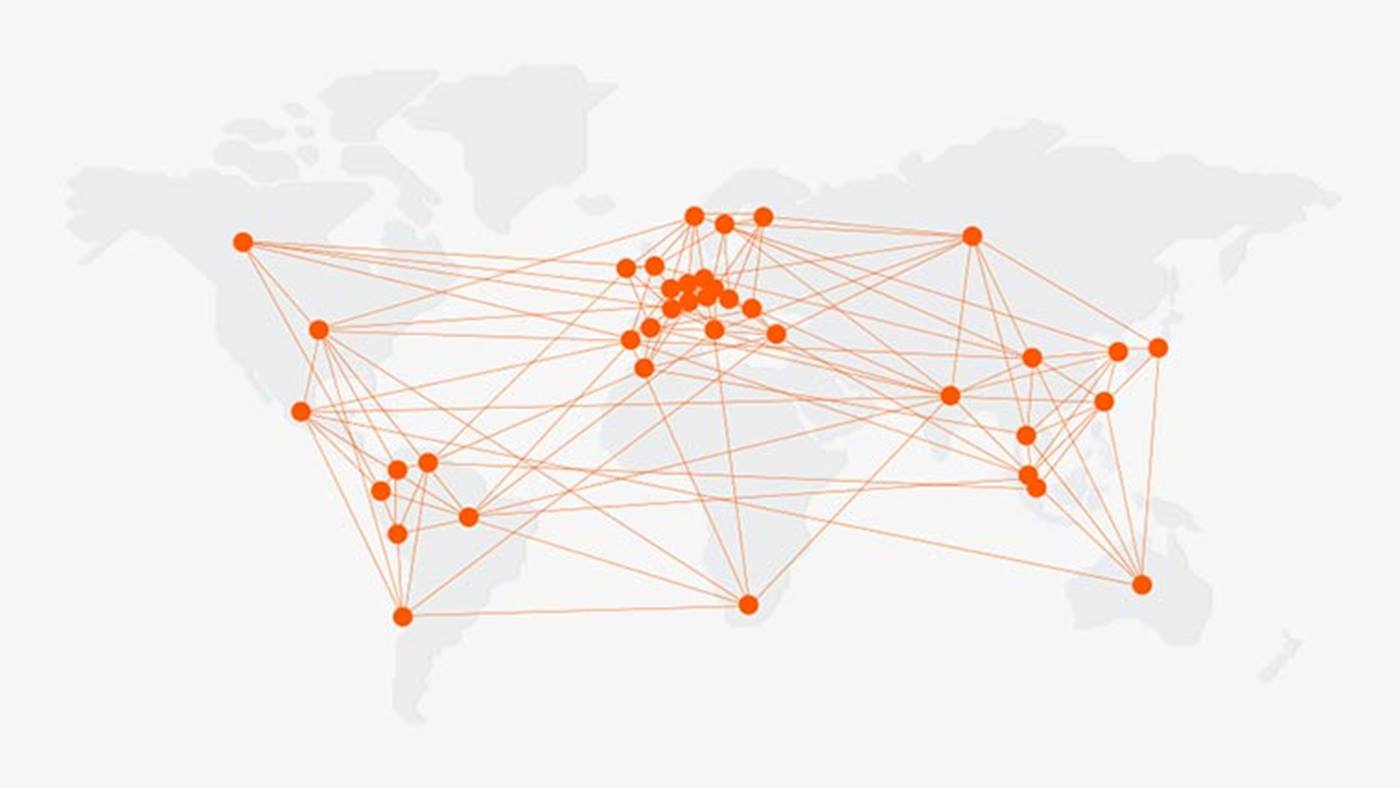Rehab with robots – practical experience for practical applications
The starting point was practical experience at the local university hospital. “Nursing staff there carried out the rehabilitation measures on patients manually. That was physically demanding work and took a lot of time at the expense of more highly skilled tasks. The idea was to automate the process.” The problem was that the prototype incorporated the arm of an industrial robot. “We very quickly realized that it would be really difficult to obtain the necessary certifications for a medical product,” recalls Rune Kristensen from LSR. We ideally needed a robot which was capable of receiving certification, as the key component, which would allow a solution to be developed more quickly and easily.


